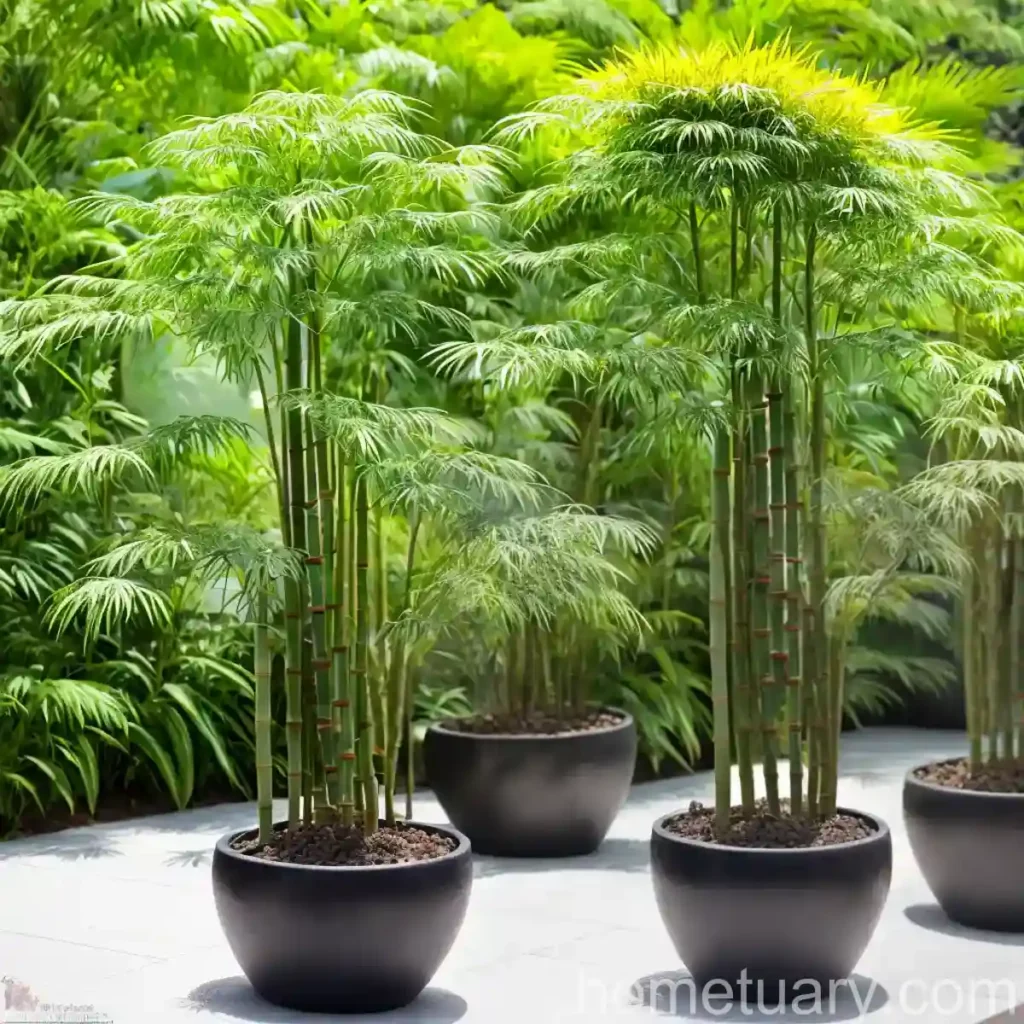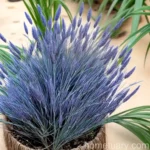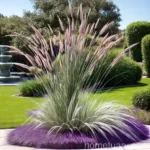Dwarf Bamboo (Pleioblastus Fortunei) Care Guide
What is Dwarf Bamboo (Pleioblastus Fortunei)?
Dwarf Bamboo, scientifically known as Pleioblastus Fortunei, is a charming and low-maintenance plant that belongs to the Poaceae family. This species is native to East Asia, specifically Japan and China, and is known for its compact size, making it an excellent choice for small spaces and container gardens.
Dwarf Bamboo is a versatile plant that can be used for ground cover, erosion control, privacy screening, and as an ornamental plant in gardens and landscapes. Its adaptability to various growing conditions and its aesthetic appeal make it a popular choice among gardeners and landscapers.
Key Takeaways – Dwarf Bamboo (Pleioblastus Fortunei)
Before delving into the specific care requirements and characteristics of Dwarf Bamboo, let’s explore some key takeaways about this fascinating plant:
- It is a low-maintenance and hardy bamboo species.
- Pleioblastus Fortunei is ideal for small gardens and container planting.
- The plant thrives in a range of sunlight conditions, making it versatile for different garden settings.
- Dwarf Bamboo is a popular choice for ground cover and erosion control due to its spreading nature.
- It is an attractive option for landscaping, particularly in Asian-inspired gardens.
- The plant has several uses in traditional medicine and its leaves are known for their medicinal properties.
Now, let’s explore the essential aspects of caring for Dwarf Bamboo, including its cultural requirements, uses, maintenance, and common issues that plant enthusiasts may encounter.
Culture
Uses
Dwarf Bamboo (Pleioblastus Fortunei) offers a multitude of uses in garden and landscape settings. Some of its primary uses include:
-
Ground Cover: Due to its spreading nature, Dwarf Bamboo is an excellent choice for ground cover in garden beds and rock gardens. Its dense foliage provides effective weed suppression and adds a lush green carpet to the landscape.
-
Erosion Control: The vigorous growth and rhizomatous nature of Dwarf Bamboo make it highly effective for controlling soil erosion on slopes and embankments. Its root system helps stabilize the soil and prevents erosion.
-
Privacy Screening: The dense foliage of Pleioblastus Fortunei makes it a valuable plant for creating privacy screens and hedges. It can be used to delineate spaces and provide a green barrier in outdoor settings.
-
Container Planting: Its compact size and clumping growth habit make Dwarf Bamboo an ideal choice for planting in containers and pots. It adds a touch of greenery to patios, balconies, and small outdoor spaces.
-
Ornamental Plant: With its graceful appearance and delicate leaves, Dwarf Bamboo serves as an attractive ornamental plant in gardens, adding visual interest and texture to the landscape.
-
Traditional Medicine: In traditional Chinese and Japanese medicine, the leaves of Dwarf Bamboo are used for their medicinal properties, providing various health benefits.
Water
Proper watering is crucial for the health and vitality of Dwarf Bamboo. Here are some essential watering tips for this plant:
-
Regular Watering: While Dwarf Bamboo is relatively drought-tolerant once established, it benefits from regular watering, especially during dry periods. Ensure that the soil remains consistently moist but not waterlogged, particularly during the plant’s establishment phase.
-
Deep Watering: When watering, aim to moisten the soil to a sufficient depth to encourage the development of a robust root system. Deep watering encourages the roots to grow deeply into the soil, improving the plant’s overall resilience and water uptake.
-
Mulching: Applying a layer of organic mulch around the base of the plant helps retain soil moisture, reduces water evaporation, and suppresses weed growth. Mulching also contributes to the overall health of the soil and provides insulation to the roots during temperature fluctuations.
-
Avoid Waterlogging: While adequate moisture is essential, it is equally important to prevent waterlogging, as excessive moisture can lead to root rot and other detrimental conditions. Ensure that the soil has good drainage to prevent water accumulation around the roots.
Sunlight
Sunlight requirements play a significant role in the growth and development of Dwarf Bamboo. Understanding its sunlight needs is crucial for ensuring optimal plant health. Consider the following sunlight considerations for Pleioblastus Fortunei:
-
Light Conditions: Dwarf Bamboo thrives in partial to full sun conditions. It typically requires at least 4-6 hours of direct sunlight per day for vigorous growth and healthy foliage. However, it can also tolerate partial shade, making it adaptable to different lighting environments.
-
Shade Tolerance: In areas with intense sunlight and high temperatures, providing some afternoon shade can help protect the plant from excessive heat stress. Partial shade can also be beneficial in particularly hot climates.
-
Indoor Lighting: When grown as a houseplant, Dwarf Bamboo can adapt to indoor environments with bright, indirect light. It is important to place indoor plants near windows or areas with ample natural light to ensure their well-being.
Fertilizer
Proper fertilization contributes to the overall health and vitality of Dwarf Bamboo. Incorporating the right nutrients into the soil can promote robust growth and vibrant foliage. Here are some essential fertilizer requirements for Pleioblastus Fortunei:
-
Balanced Fertilizer: Use a balanced, slow-release fertilizer formulated for bamboo or ornamental grasses. Apply the fertilizer in early spring before the growing season begins to provide the plant with essential nutrients for healthy growth.
-
Organic Amendments: Incorporating organic matter into the soil, such as compost or well-rotted manure, can enhance soil fertility and provide a gradual release of nutrients to the plant. Organic amendments also improve soil structure and moisture retention.
-
Avoid Excessive Nitrogen: While Dwarf Bamboo benefits from periodic fertilization, avoid excessive nitrogen, as it can promote lush foliage at the expense of overall plant health. Aim for a balanced fertilizer with moderate nitrogen levels to avoid excessive vegetative growth.
-
Top Dressing: Applying a thin layer of compost or well-balanced organic fertilizer around the base of the plant in spring can provide a nutrient boost and contribute to the long-term health of the plant.
Soil
The soil composition and quality directly impact the growth and well-being of Dwarf Bamboo. Understanding the ideal soil conditions for Pleioblastus Fortunei is essential for successful cultivation. Consider the following soil requirements for this bamboo species:
-
Well-Drained Soil: Dwarf Bamboo thrives in well-drained soil with good aeration. Avoid waterlogged or compacted soil, as these conditions can lead to root suffocation and other detrimental effects on plant health.
-
Moisture Retention: While good drainage is essential, the soil should also retain sufficient moisture to support the plant’s water needs. A loamy, humus-rich soil with good water retention capabilities is beneficial for Dwarf Bamboo.
-
pH Levels: Pleioblastus Fortunei prefers slightly acidic to neutral soil with a pH range between 5.5 and 7.0. Conduct a soil pH test and amend the soil as needed to create optimal growing conditions for the plant.
-
Organic Matter: Incorporating organic matter, such as well-rotted compost, into the soil can improve its structure, fertility, and moisture retention capacity. Organic amendments also support the growth of beneficial soil microorganisms.
Pruning
Pruning plays a role in maintaining the form, density, and overall appearance of Dwarf Bamboo. Regular pruning and maintenance help prevent the plant from becoming too sprawling and invasive. Here are some pruning tips for managing Pleioblastus Fortunei:
-
Thinning Out: Periodically thin out older and congested stems to improve air circulation and light penetration within the plant. This practice also helps maintain the plant’s compact form and encourages new growth.
-
Containment: When used as ground cover or in contained spaces, regular pruning helps contain the spread of Dwarf Bamboo and prevent it from encroaching on other plants or areas of the garden.
-
Remove Dead or Damaged Stems: Trim away any dead, diseased, or damaged stems to maintain the plant’s overall health and aesthetic appeal. Pruning also promotes new growth and rejuvenation of the plant.
-
Spring Pruning: In early spring, before the start of the growing season, conduct a thorough pruning to remove any winter damage and shape the plant for the upcoming growing season.
Propagation
Propagation allows for the expansion of the Dwarf Bamboo population and the creation of new plants for additional garden or landscaping projects. Here are some methods for propagating Pleioblastus Fortunei:
-
Division: Division is a common and effective method for propagating Dwarf Bamboo. It involves carefully digging up mature clumps and dividing them into separate sections, each with its own root system. The divided sections can then be replanted to establish new plants.
-
Rhizome Cuttings: Rhizome cuttings offer another propagation method for Dwarf Bamboo. Select healthy and vigorous rhizomes, and cut them into sections with at least one bud or node. Plant the rhizome cuttings in a suitable growing medium to encourage the development of new shoots and roots.
-
Container Planting: Propagating Dwarf Bamboo in containers can be an effective way to produce new plants. Placing rhizome cuttings or divided sections in individual pots with well-draining soil promotes the establishment of new plants for future use.
Container Popularity
Dwarf Bamboo’s compact size and clumping growth habit make it a popular choice for container planting in gardens and outdoor spaces. Its adaptability to containers allows it to thrive in diverse settings, from balconies and patios to urban rooftop gardens. The use of containers offers several advantages for cultivating Pleioblastus Fortunei:
-
Space Efficiency: In small gardens or limited outdoor areas, container planting provides a space-efficient option for including greenery and natural elements.
-
Portability: Containers allow for the mobility of Dwarf Bamboo plants, making it easy to relocate them as needed for aesthetic purposes or to optimize their growing conditions.
-
Aesthetic Appeal: The use of attractive containers and pots enhances the visual appeal of Dwarf Bamboo, contributing to the overall aesthetic of garden and patio spaces.
-
Controlled Growth: Container planting helps contain the spread of Dwarf Bamboo, particularly in areas where its vigorous growth could become invasive.
-
Versatility: The use of containers expands the possibilities for incorporating Dwarf Bamboo into various outdoor settings, including urban landscapes, rooftop gardens, and small outdoor spaces.
Common Diseases
While Dwarf Bamboo is generally resilient, it can be susceptible to certain diseases under unfavorable growing conditions. Understanding common diseases and their potential impact on Pleioblastus Fortunei is essential for proactive management and prevention. Some common diseases include:
-
Powdery Mildew: This fungal disease may appear as a powdery white or gray coating on the leaves of Dwarf Bamboo. Proper air circulation and maintaining moderate humidity levels help prevent powdery mildew.
-
Leaf Spot: Leaf spot diseases can cause dark, round spots to appear on the leaves of the plant. Ensure proper sanitation and avoid overhead watering to minimize the risk of leaf spot diseases.
-
Rust: Rust diseases manifest as small, orange-brown pustules on the foliage of the plant. Addressing any moisture-related issues and maintaining good air circulation can help prevent rust infections.
-
Root Rot: Excessive moisture and poor drainage can lead to root rot in Dwarf Bamboo. Ensure that the soil has adequate drainage and avoid overwatering to prevent this detrimental condition.
Disease Diagnosis
Diagnosing and addressing diseases in Dwarf Bamboo requires careful observation of the plant and a proactive approach to management. Here are some key steps for disease diagnosis and management:
-
Visual Inspection: Regularly inspect the foliage, stems, and overall appearance of the plant for any signs of disease. Look for discoloration, abnormal growth, or the presence of fungal or bacterial growth.
-
Identification: Identify the specific symptoms and signs associated with common plant diseases, such as powdery mildew, leaf spot, rust, and root rot. Understanding the characteristics of each disease aids in accurate diagnosis.
-
Cultural Practices: Implement cultural practices that promote overall plant health and resilience, including proper watering, adequate spacing, and good sanitation to minimize disease pressure.
-
Treatment: If disease symptoms are observed, consider targeted treatments, such as the application of horticultural oils, fungicides, or other recommended control measures. Follow product instructions and guidelines for safe and effective management.
-
Preventive Measures: Emphasize preventive measures, such as maintaining optimal growing conditions, providing proper air circulation, and avoiding excessive foliage moisture to reduce the likelihood of disease development.
Common Pests
While Dwarf Bamboo is relatively resistant to pests, some common insects may occasionally pose a threat to its health. Understanding the potential pests and their management is essential for maintaining the well-being of Pleioblastus Fortunei. Common pests include:
-
Aphids: These small insects may cluster on the undersides of leaves, feeding on plant sap and potentially causing leaf distortion and honeydew production. A strong spray of water or the application of insecticidal soap can help manage aphid infestations.
-
Scale Insects: Scale insects can appear as small, immobile bumps on the stems or leaves of Dwarf Bamboo. Pruning and the application of horticultural oils can help control and manage scale populations.
-
Spider Mites: Spider mites can cause stippling and discoloration on the foliage of the plant. Regularly spraying the foliage with water and maintaining adequate humidity levels can help deter and manage spider mite infestations.
-
Snails and Slugs: These pests may feed on the tender shoots and foliage of Dwarf Bamboo. Implementing physical barriers and the use of organic snail and slug control methods can help protect the plant from these pests.
Botanist’s Tips
For successful cultivation and enjoyment of Dwarf Bamboo, consider the following botanist’s tips and best practices:
-
Selecting the Right Variety: When choosing a variety of Dwarf Bamboo for your garden or landscape, consider factors such as mature size, growth habit, and specific characteristics that suit your aesthetic and functional preferences.
-
Proper Spacing: If planting multiple Dwarf Bamboo specimens, provide sufficient spacing between plants to accommodate their mature size and prevent overcrowding.
-
Monitoring Growth: Regularly monitor the growth and spread of Pleioblastus Fortunei to ensure that it remains contained within the desired areas and does not encroach on other plants or garden features.
-
Appropriate Maintenance: Implement a consistent maintenance routine that includes watering, fertilization, pruning, and pest and disease monitoring to ensure the long-term health and vigor of the plant.
-
Responsible Disposal: When disposing of any pruned or removed plant material, especially in the case of an invasive species, follow proper disposal guidelines to prevent the spread of Dwarf Bamboo in unintended areas.
-
Companion Planting: Consider companion planting with other garden plants that complement the aesthetic appeal and growing requirements of Dwarf Bamboo. Select compatible species that thrive in similar cultural conditions.
-
Winter Protection: In regions with cold winters, provide adequate protection for Dwarf Bamboo to safeguard it from frost or freezing temperatures. Consider mulching and providing additional insulation to protect the plant during winter.
Fun Facts
To appreciate the unique attributes and cultural significance of Dwarf Bamboo, here are some interesting fun facts about this distinctive plant:
-
Symbolic Significance: In East Asian cultures, bamboo is often associated with symbolism related to strength, flexibility, and resilience. Its presence in gardens and landscapes carries cultural and spiritual significance.
-
Historical Uses: Throughout history, bamboo has served as an essential material for various purposes, including construction, crafting, and traditional implements. Its versatility as a sustainable resource is highly valued.
-
Phyllostachys Aurea: This species of bamboo, also known as Golden Bamboo, is closely related to Pleioblastus Fortunei and shares similar characteristics, including rapid growth and clumping habit.
-
Bamboo Folklore: Bamboo features prominently in folklore and traditional tales, often representing qualities such as longevity, wisdom, and prosperity. It is a recurring motif in literature and art across different cultures.
-
Culinary Uses: While the leaves of Dwarf Bamboo are primarily valued for their medicinal properties, select species of bamboo shoots are used as culinary ingredients in Asian cuisine due to their tender and edible nature.
Now that we’ve covered the key aspects of caring for Dwarf Bamboo (Pleioblastus Fortunei), it’s essential to provide additional resources for plant enthusiasts to explore for further information, inspiration, and guidance.
Links to External Resources
For a comprehensive understanding of Dwarf Bamboo and its cultivation, consider exploring the following resources:
- Royal Horticultural Society – Bamboo
- American Bamboo Society
- University of Florida – Bamboo for the Florida Landscape
- Missouri Botanical Garden – Growing Bamboo
These resources provide valuable insights, tips, and guidance for individuals interested in learning more about Dwarf Bamboo and its diverse applications in gardens and landscapes.
As you immerse yourself in the world of gardening and landscaping, harness the beauty and resilience of Dwarf Bamboo to create captivating outdoor spaces and experience the cultural significance of this remarkable plant.
In conclusion, the cultivation of Dwarf Bamboo (Pleioblastus Fortunei) offers a rewarding and enriching experience for gardeners and landscape enthusiasts. By embracing the plant’s low-maintenance nature, adaptability, and aesthetic charm, individuals can incorporate this versatile species into diverse settings, from small urban gardens to expansive landscapes. Understanding the cultural requirements, uses, maintenance practices, and potential challenges of Dwarf Bamboo empowers enthusiasts to cultivate and appreciate the unique qualities of this remarkable plant.
Whether used as ground cover, privacy screening, or an ornamental feature, Dwarf Bamboo contributes to the vitality and beauty of outdoor spaces while honoring its rich cultural heritage. As you embark on your journey of plant cultivation and exploration, may the resilience and grace of Dwarf Bamboo inspire you to create captivating and sustainable landscapes that reflect the timeless beauty of nature.
The world of plants is a rich tapestry of diversity and wonder, and Dwarf Bamboo stands as a testament to the enduring allure and practicality of ornamental grasses in gardens and landscapes. Embrace the distinctive appeal and functional benefits of Dwarf Bamboo, and let its presence bring harmony, tranquility, and natural elegance to your outdoor environment.
Dwarf Bamboo – where resilience meets beauty, and where tradition intertwines with modernity, ushering in a new era of sustainable gardening and landscaping.
Happy gardening!
Dr. Plant Scientist















